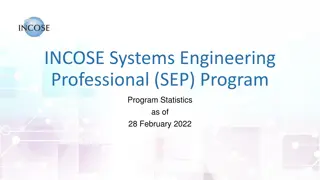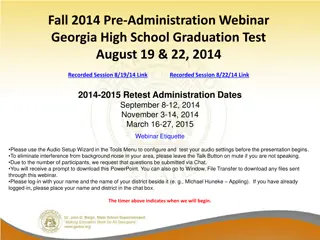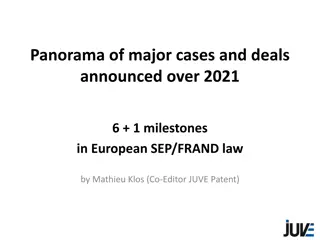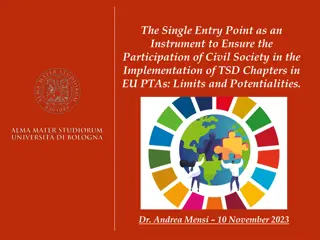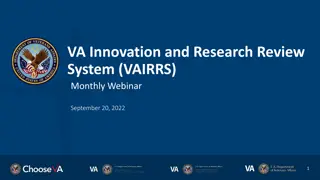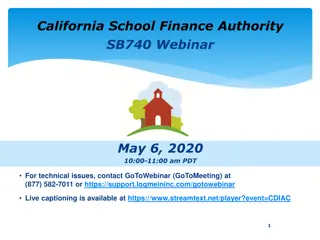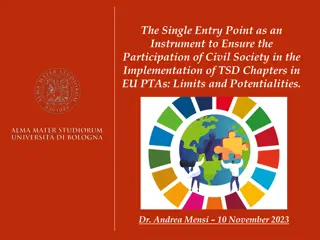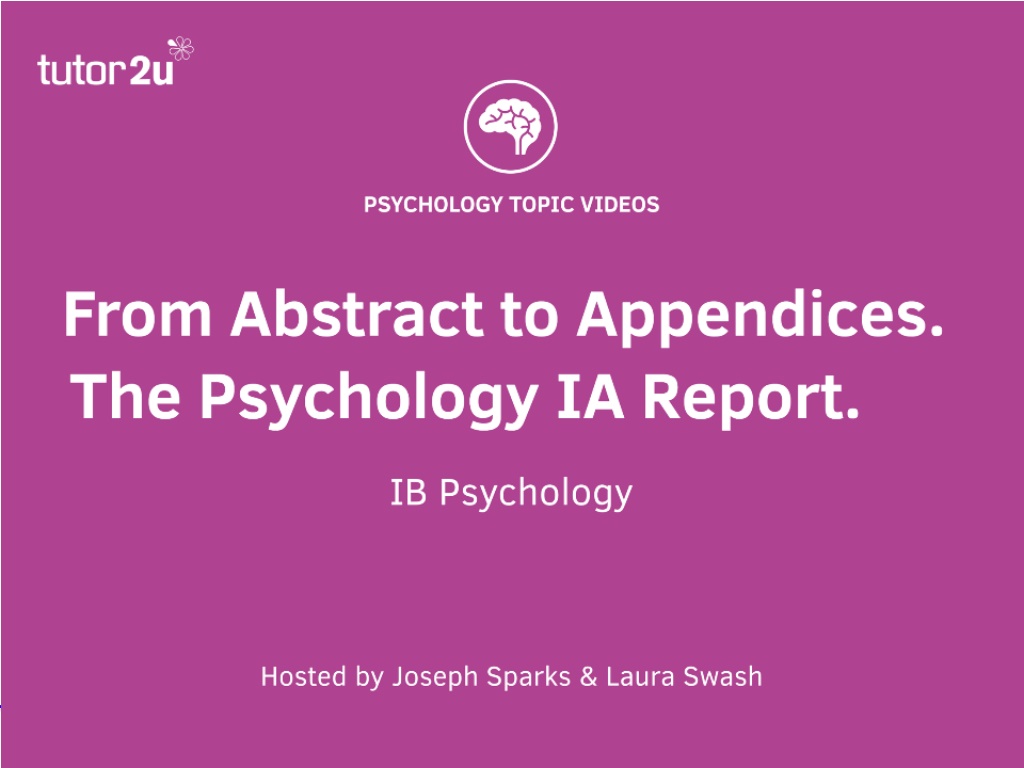
Supporting Students in IB Psychology IA Webinars
Join our upcoming webinars focusing on various topics in IB Psychology, including brain and behavior, cognitive psychology, social psychology, and qualitative methods. Gain insights, tips, and resources to support students with their IB Diploma Psychology IA. Check out the schedule and participate in discussions to enhance your teaching strategies.
Download Presentation

Please find below an Image/Link to download the presentation.
The content on the website is provided AS IS for your information and personal use only. It may not be sold, licensed, or shared on other websites without obtaining consent from the author. If you encounter any issues during the download, it is possible that the publisher has removed the file from their server.
You are allowed to download the files provided on this website for personal or commercial use, subject to the condition that they are used lawfully. All files are the property of their respective owners.
The content on the website is provided AS IS for your information and personal use only. It may not be sold, licensed, or shared on other websites without obtaining consent from the author.
E N D
Presentation Transcript
Other IB Psychology Webinars coming up Brain & behaviour: More than genetics? Mon 31 October 8.30pm GMT Cognitive Psychology: How to use theories of memory. Wed 2 Nov 4.30pm GMT Social Psychology: Stereotype formation and effects. Wed 9 Nov 4.30pm GMT Quality answers for Qualitative Methods papers. 8.30pm GMT Tues 15 Nov
From Abstract to Appendices Supporting your students with their IB Diploma Psychology IA Welcome to the first in our series of Psychology IB Diploma webinars. Aims of this webinar: Identify the 4 main problems students have with the IA Suggest solutions Suggest some ideas to help your organisation of the IA
A couple of questions For how many years have you been supporting students with the IA? How many Psychology students do you personally have this year, for the IA?
A Quick IA Overview HL (20% grade) SL (25% grade) 1500-2000 words 1000-1500 words Background studies needed No background studies needed One IV and one DV One IV and one DV Inferential statistics calculated Just descriptive statistics 28 marks 20 marks
4 Student Challenges Planning their IA experiment and report Choosing a suitable study Writing within the word limit Managing their time
Choosing a Suitable Study Students find it hard to choose a study to replicate Control their choice: Feasible? Ethical? One IV and DV? Data level? Choose one from our list of studies
Suitable Studies Bransford, J.D. & Johnson, M. K. (1972). Contextual prerequisites for understanding: some investigations of comprehension and recall. Journal of Verbal Learning and Verbal Behavior, 11, 717-726 Loftus, E.C. & Palmer, J. (1974). Reconstruction of Automobile Destruction: An Example of the Interaction between Language and Memory. Journal of Verbal Learning and Verbal Behaviour, 13, 585-589 Peterson, L.R. & Peterson, M.J. (1959) Short-term retention of individual verbal items. Journal of Experimental Psychology, 58, 193-198 Rashidi, N. (2011).The Effect of Classical Music on the Reading Comprehension of Iranian Students . Theory and Practice in Language Studies,1, (1 ) 74-82, January 2011 Stroop, J. Ridley. (1935). Studies of interference in serial verbal reactions. Journal of Experimental Psychology, 18, 643-662
Planning the IA Students do not have a clear vision of the IA Have a hard copy for them to look at Use graphics to help them structure Write abstract first* [*More on that later!]
IA Example On the tutor2u site you will find a model answer for both HL and SL. Visit: www.tutor2u.net/psychology Click series Either: IB Psychology Internal Assessment HL IB Psychology Internal Assessment SL
A Graphic Showing the Structure of the IA Abstract [Contents page not required, but useful] Design Participants Materials Procedure Introduction Method Discussion Results References Appendices Descriptive Inferential [HL only]
Writing Within the Word Limit Writing within the word limit Have a suggested word count for each section Use a reduce your words exercise
Suggested Minimum Word Counts Section HL SL Introduction 500 350 Method 500 450 Results (Descriptive) 150 150 Results (Inferential) 150 - Discussion 600 500 Total 1900 1450
Example of a Word-Reducing Exercise Sample Reduced The original study that I am replicating is Loftus and Palmer s study which is a study where they look at how memory can be reconstructed. (25 words) This experiment is a partial replication of Loftus and Palmer s (1974) research into the reconstruction of memory. (17 words) While the research was fairly successful and the results were similar to those that were found in the original study that was replicated, there were also some problems and limitations, which I will now write about. (36 words) My results supported the findings of the original study. However, there were some methodological limitations: (15 words) The experimental design that I decided to use was an independent samples design. (13 words) Independent samples design was used. (5 words)
Managing their time Managing their time Deadline for each section Clear beginning to end timeline
Deadline for Each Section H/W Group by study Group read of relevant section Peer feedback according to criteria Give in section for teacher written feedback Student revises section Day before Deadline Deadline Day
Possible Timelines Start before summer break > winter break Start just after summer break > just after winter break All within one month Start before summer break > end with IA writing day
IA innovation (1) After Student writes abstract first completing IA, student completes abstract Teacher reviews suitability of expt and method Student revises or proceeds with IA
Writing the Abstract First Early Abstract This experiment will be a partial replication of Diemand-Yauman et al. s (2011) research into disfluency and learning, in which they demonstrated that material written in italicized or bold font (disfluent font) was better learnt and more easily recalled than material written in an easier to read (fluent) font (Diemand-Yauman et al., 2011). The aim of this experiment is to investigate if a list of words written in an italicized disfluent font would be better remembered than the same list written in a fluent font. An independent samples design with 20 students chosen by opportunity sampling will be used to test the experimental hypothesis: Significantly more words will be recalled from a 25-word list written in a disfluent font (Calibri italicized 12 pt) than are recalled from the same word list written in a fluent font (Calibri 12 pt). The null hypothesis is: Any increase in remembered words from the25-word list written ina disfluent (italicized) font will not be significant. Any observed increase is due to chance. 17 and 18 year old student participants will be randomly allocated, by distribution of word lists, to the experimental (disfluent) or the control (fluent) group. They will be given 10 minutes to learn the words on their list, and another 10 minutes to try and recall them in writing. The mean number of words remembered from the disfluent font word list was ____ with a SD of ______ and the mean number of words remembered from the fluent font word list was ______ with a SD of _____ The Mann-Whitney U test was applied and the difference was found to be/not to be significant at the p< 0.05 level. Therefore the null hypothesis was accepted/rejected, and the conclusion drawn that disfluency does/ does not result in a significant increase in recall. Word count: ______
Writing the abstract first - Final Abstract This experiment is a partial replication of Diemand-Yauman et al. s (2011) research into disfluency and learning, in which they demonstrated that material written in italicized or bold font (disfluent font) was better learnt and more easily recalled than material written in an easier to read (fluent) font (Diemand-Yauman et al., 2011). The aim of this experiment was to investigate if a list of words written in an italicized disfluent font would be better remembered than the same list written in a fluent font. An independent samples design with 20 students chosen by opportunity sampling was used to test the experimental hypothesis: Significantly more words will be recalled from a 25-word list written in a disfluent font (Calibri italicized 12 pt) than are recalled from the same word list written in a fluent font (Calibri 12 pt). The null hypothesis is: Any increase in remembered words from the25-word list written ina disfluent (italicized) font will not be significant. Any observed increase is due to chance. 17 and 18 year old student participants were randomly allocated, by distribution of word lists, to the experimental (disfluent) or the control (fluent) group. They were given 10 minutes to learn the words on their list, and another 10 minutes to try and recall them in writing. The mean number of words remembered from the disfluent font word list was 19.6 with a SD of 2.76 and the mean number of words remembered from the fluent font word list was 17.5 with a SD of 2.17. The Mann-Whitney U test was applied and the difference was found not to be significant at the p< 0.05 level. Therefore the null hypothesis was accepted, and the conclusion drawn that disfluency does not result in a significant increase in recall. Word count: 288
IA innovation (2) IA writing day draft IA report is written Teacher approves IA plan Student gathers background reading Student conducts experiment Student writes materials (consent form, etc.)
IA Innovation (3) Sample IAs available to read Suitable original studies to read Student ethics committees
Downloadable Resources Today s resources will be posted in John Crane s FB Group. OR Sign up to our Daily Digest: http://www.tutor2u.net/dailydigest and receive an email tomorrow morning directing you to the resources. Don t forget to check our Model HL/SL IAs on the tutor2u website.
Dont forget to sign up for our future webinars: www.tutor2u.net/psychology/events Please follow us on Twitter @tutor2upsych and spread the word Encourage your students to join our Student FB Community: IB Psychology Student Group . If you ever need any advice, support or guidance, email: joseph@tutor2u.net Any Questions?


